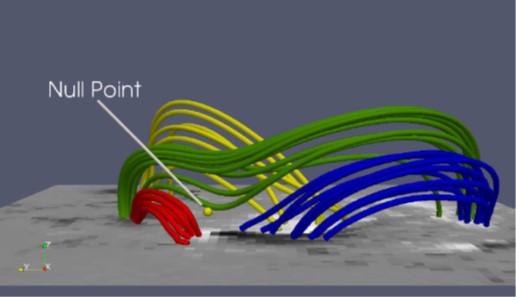Home » 2020 (Page 2)
Yearly Archives: 2020
Forecasting the 2018 February 12th CME propagation with the P-DBM model: a fast warning procedure
Papers from SWICo members
Authors:
Dario Del Moro, Gianluca Napoletano, Roberta Forte, Luca Giovannelli, Ermanno Pietropaolo, Francesco Berrilli
The forecast of the time of arrival of a Coronal Mass Ejection (CME) to Earth is of critical importance for our high−technology society and for the Earth’s upper atmosphere status and LEO satellites. We realized a procedure based on the Drag−Based Model which uses probability distributions, rather than exact values, as input parameters, and allows the evaluation of the uncertainty on the forecast. The P−DBM belongs to a family of models that apply a somewhat simplified description of the main interaction the ICME is subject to during its interplanetary journey. The drag−based models (DBMs) assume that beyond a certain heliospheric distance, a simple aerodynamic drag equation can describe the interaction between the ICME and the solar
wind environment.

Ensemble modeling incorporate the intrinsic limitation of information due to measure errors or due to the lack of measure at all, in form of probability distributions. In practice, instead of a single run to forecast an ICME propagation, a set of runs, driven with input parameters extracted from suitable distributions are used to retrieve a distribution of output parameters. We tested this approach using a set of CMEs whose transit times are known, obtaining extremely promising results.
We realized a real−time implementation of this algorithm which ingests the outputs of automated CME tracking algorithms as inputs to provide early warning for those CME approaching Earth. We present the results of this real−time fast warning procedure for the case of the 2018 February 12th
CME.
Publication: DEL MORO, Dario et al. Forecasting the 2018 February 12th CME propagation with the P-DBM model: a fast warning procedure. Annals of Geophysics, [S.l.], v. 62, n. 4, p. GM456, dec. 2019. ISSN 2037-416X.
https://www.annalsofgeophysics.eu/index.php/annals/article/view/7750
Can superflares occur on our Sun?
Papers from SWICo members
Authors:
Paolo Romano, Abouazza Emhamdi, Ayman Kordi
Two strong homologous white light flares of X-GOES class occurred on the Sun on Sept. 06, 2017, providing a rare exceptional opportunity to study the mechanisms responsible for the formation of the magnetic field configurations suitable for the manifestation of such yet enigmatic eruptive events and their effects in the lower layers of the solar atmosphere.

Using photospheric vector magnetograms, taken before the beginning of the two X-class events, as boundary conditions to reconstruct the non−linear coronal magnetic field configuration, we identified two related 3D null points located at low heights above the photosphere (i.e. in very low corona). These null points are most likely responsible for the triggering of the two strong X-GOES class flares. We deduced that their formation at such low altitudes may plausibly be ascribed to the peculiar photospheric horizontal motions of the main magnetic structures of the hosting Active Region NOAA 12673.
These events can be adopted as a hint for a possible interpretation of the activity of young G-type stars, recently reported by the Kepler mission, and can shed light on the probability that superflares occur on our Sun.
Publication: Two Strong White-Light Solar Flares in AR NOAA 12673 as Potential Clues for Stellar Superflares, Solar Physics, 294, 4, 2019
https://link.springer.com/article/10.1007/s11207-018-1388-0
SOLARNET school March 23-27, MSSL – Call for Applications
The call for application is open for the SOLARNET school “A holistic view of the solar atmosphere – combining space and ground-based observations”
Dates, venue: March 23-27, 2020 at UCL – Mullard Space Science Laboratory (Dorking, UK)
The school “A holistic view of the solar atmosphere – combining space and ground-based observations” has for a goal to provide an introduction to the approaches and analysis methods needed to successfully combine space and ground-based observations of the solar atmosphere from the photosphere to the corona, in order to a complete view of the underlying physical processes at work in a range of different solar phenomena.
To apply for the SOLARNET school, please send to g.valori@ucl.ac.uk no later than February 25, 2020
- a one-page CV
- a brief statement of interest (max. 1/2 page) indicating your field of research and why you want to participate in the school.
Web Links (more information will appear in due course): https://solarnet-project.eu/Schoolshttps://solarnet-project.eu/A-holistic-view-of-the-solar-atmosphere
